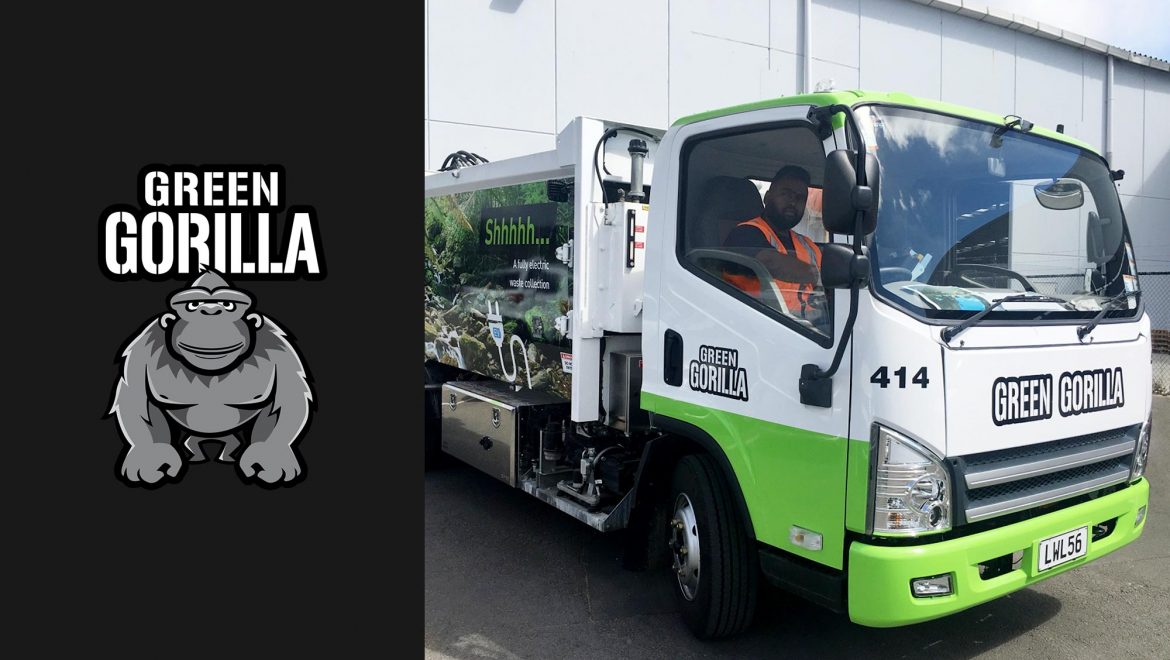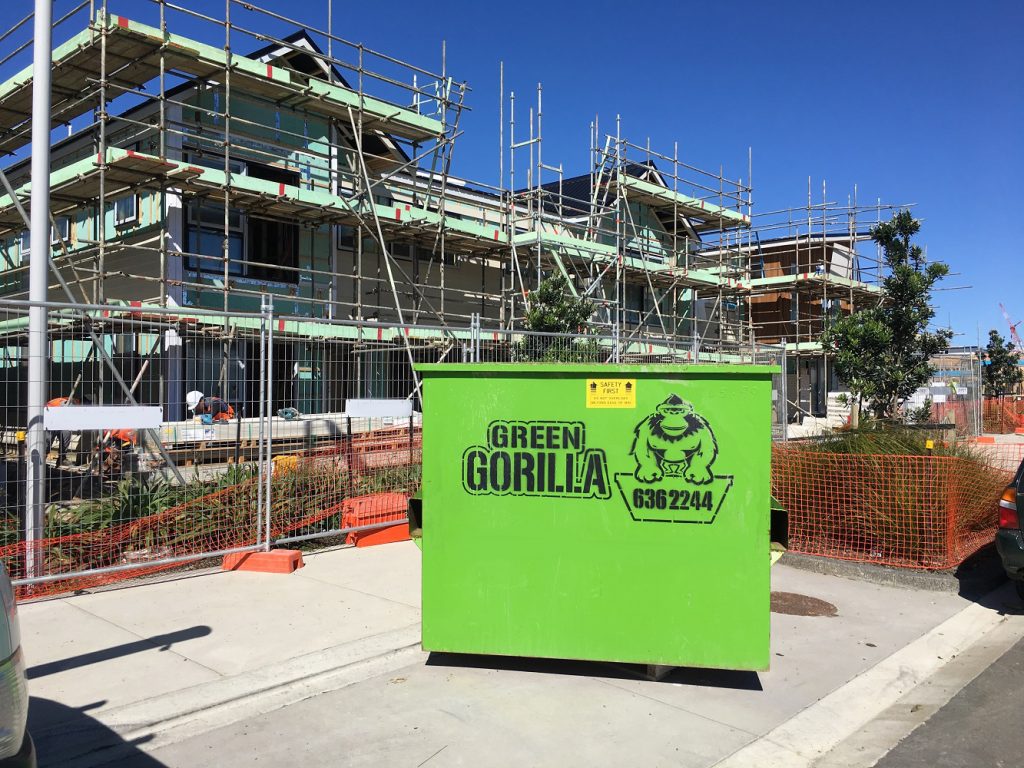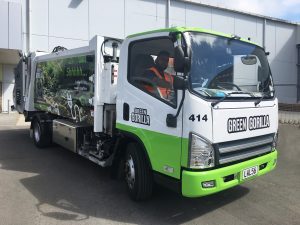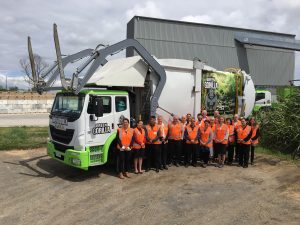Q&A with Phil Yates: Shaping the Future of Construction and Industrial Waste in NZ
Did you know:
-
In Auckland, construction and Industrial waste makes up of 85% of rubbish sent to landfills?
-
40% of waste which goes to landfills in Auckland comes from construction waste alone?
-
When plasterboard is dumped into a landfill, it converts into methane gas which is a poisonous greenhouse gas?
The year of 2019 and 2020 has witnessed movements across the globe about minimising negative impact that mankind has on the environment. Even if you are not a front runner in this movement, it has affected everyone in some way or the other.
Whether you now choose to bring your own bag to countdown instead of buying a plastic bag or sorting your rubbish and recycling more carefully, this slow but sure change in habits comes from awareness of how our previous practices are just not sustainable for our planet anymore.
The media and government are finding ways of raising awareness about the importance of reducing, reusing and recycling our residential waste, but can we say the same about construction waste? Auckland council estimates that construction waste is the single largest waste stream with up to 40% going directly to landfills. New Zealand has 110 landfill sites with 88 of these sites in Auckland alone.
As a renovation and construction company we were shocked at these numbers and wanted know more about how our waste was contributing to our environment. As we are partnered with Green Gorilla to manage our waste, we decided to contact Phil Yates from the company and understand a bit more about construction waste and its impact on the environment.
Phil Yates is the Marketing Manager at Green Gorilla. Apart from being passionate and believing in Green Gorilla’s commitment to sustainability, he also plays a vital role in raising awareness of the detrimental impact that the construction industry in Auckland has on the environment.
https://nz.linkedin.com/in/philyatesnz
Q&A with Phil Yates
Superior Renovations: How much do construction/renovation companies contribute towards the total waste in Auckland?
Phil Yates (Green Gorilla): Auckland Council estimate construction waste is the largest single waste stream, at around 40 percent of total weight going to landfill, this doesn’t include the rubble and concrete that go to clean fill and managed fill sites.
Superior Renovations: Have you seen growth?
Phil Yates (Green Gorilla): The whole industry has been in upward growth and the most recent figures from Statistics New Zealand reflect that. Auckland dominates about 40 percent of all construction work in New Zealand which reached $22.78b in 2018, 7.3 percent more than in 2017.
Non-residential building soared by almost 20 percent to $3.1b in Auckland, eclipsing residential building’s increase of 14 percent to $6.05 billion.
Superior Renovations: Traditionally how was this kind of waste dealt with?
Phil Yates (Green Gorilla): Generally construction and demolition waste is still dumped straight to landfill. This is common across most of NZ. Something to remember is that waste disposal is controlled by each local authority not by government, so there is no obligation or regulation to discourage this behaviour.
Superior Renovations: What impact does this waste have on NZ’s environment?
Phil Yates (Green Gorilla): You only have to look at the recent events on the West Coast of New Zealand where coastal erosion and storm weather exposed landfill and spread waste along the coast. There are 110 known closed dumps around parts of the country that will be exposed to the sea with just a 0.5 metre rise in average sea levels. Auckland has 88 of those sites.
Landfill is not inevitable and by designing out waste, understanding its root causes and re-engineering current processes and practices, we can alleviate its generation.
At every stage of a project, waste reduction strategies also bring financial benefits for all stakeholders and ultimately to all New Zealanders.
Superior Renovations: Are construction companies aware of the role they play in negatively affecting Auckland’s environment?
Phil Yates (Green Gorilla): There is some awareness but generally the message doesn’t seem to as much uptake as befits the issue. There is a massive opportunity for the construction industry to take responsibility and make a major contribution to the well-being of the New Zealand environment.
Superior Renovations: How much waste does Green Gorilla process per annum?
Phil Yates (Green Gorilla): Approx. 163,000 tonnes (2018)
- How much of this is construction/renovation waste? Approx. 60,000 tonnes per annum (2018)
- What percent of this waste is recycled? Approx. 79.8% or approx. 47800 tonnes (2018)
Superior Renovations: What are the repercussions of using a landfill for construction waste?
Phil Yates (Green Gorilla): Where to start! Let’s look at plasterboard waste which basically consists of paper and gypsum a non-renewable mineral. Put gypsum into landfill and it will decompose, releasing up to a quarter its weight in hydrogen sulphide which is a major odorous component in a landfill. It poses a potential risk to humans and causes odour problems and complaints by the residents near landfills. The paper in the plasterboard converts to methane gas which is a potent greenhouse gas. That’s just plasterboard!
Superior Renovations: Why do construction companies choose waste disposal companies that are reliant on landfill compared to environmentally sustainable companies? Is it purely the cost or lack of awareness?
Phil Yates (Green Gorilla): There is no one clear answer across the industry. It depends on the construction company management. Sometimes they just don’t care what happens to their waste as long as it’s gone from their site. There could be relationships or agreements with waste service companies that dictate their waste disposal. Or waste diversion services might not be available in their area. Pressure from the end consumer could affect some change of the ‘dump to landfill’ behavior.
We could tell by our conversation so far that awareness was a huge issue with construction waste. The second issue was the attitude towards waste. During construction and renovation, waste was the last of everyone’s worry. The focus was dealing with the renovation and waste was just considered an inevitable by product of the process.
Construction companies were not asking their waste management companies about how their waste was dealt with. This question is however important and needs to be asked. We asked Phil what Green Gorilla’s solution was? What were they doing to manage our waste? Even though green gorilla managed our waste, we were not aware of the extensive measures that they undertook to reduce, reuse and recycle.
Green Gorilla’s Solution to Managing
Construction Waste in a Sustainable way
Their Philosophy is Reduce, Reuse and Recycle
Superior Renovations: Tell me a bit about Green Gorilla
Phil Yates (Green Gorilla): Green Gorilla is the largest non-landfill owning, full-spectrum waste services provider in Auckland. Our aim is to maximise recovery, reuse and recycling of commercial, construction and industrial waste otherwise destined for landfill. Unlike several of our major competitors, we don’t own or operate landfills, which means we are truly focused on the challenge of reducing, reusing and recycling waste.
Superior Renovations: What happens to construction waste at Green Gorilla?
Phil Yates (Green Gorilla): The waste is run through our Construction and Demolition Waste Processing Facility. Here we separate recyclable materials such as timber, plasterboard and metals from landfill waste. Our wood chipping operation, diverts treated and untreated wood for use as biofuel and animal bedding and landscaping product. The plasterboard processing plant successfully separates gypsum for use in horticultural and agricultural sectors. Metals are sent to specialist metal recycling plants for processing.
Superior Renovations: What are some sustainability initiatives Green Gorilla have in place?
Phil Yates (Green Gorilla): We have been operating electric waste trucks and support vehicles since 2017, and firmly believe that being able to operate a significant portion of our services on a zero emissions basis far outweigh the additional cost of the investment. The benefits of these EVs goes beyond our business, our customers and the community.
In addition to our electric vehicle fleet, our waste processing facility is electrically powered, and our material handlers are also electrically driven, being the only ones of this type in New Zealand. Electric power for this facility and our vehicle charging is supplied by Electricity, New Zealand’s only 100% CarboNZero certified supplier.
Superior Renovations: Tell me a bit about the homestar and green star reporting?
Phil Yates (Green Gorilla): Green Star is an internationally-recognised rating system for the design, construction and operation of commercial buildings and fit-out.
Homestar assesses a house, apartment or multi-unit development against several categories including energy, health and comfort; water waste and materials.
Green Gorilla can provide waste disposal reporting necessary for achieving certification.
In 2018 the associate environment minister Honorary Eugenie Sage, announced a Waste Minimisation Fund (WMF) grant of $3.1 million to enable Auckland recycling firm Green Gorilla to divert the waste and allow materials to be reused (Beehive.govt.nz, 2018).
This grant allowed Green Gorilla to construct a highly mechanised plant in Onehunga which would allow to recover a large amount of materials to be recused and recycled. This is a huge step towards sustainable growth towards a more cleaner waste management system in New Zealand. At Superior Renovations we are proud to have aligned ourselves with Green Gorilla, a pioneer in their field of sustainable waste management. We want to make a difference not only when we can but we realise that it is a necessity for the future of New Zealand.
How you can help?
Even if you are not part of the construction industry there is a way to help the future and sustainability of New Zealand and its environment. Raising awareness is the best way that anyone can help as the lack of awareness is one of the major factors for poor waste management in New Zealand.
You can help by:
- Raising awareness by sharing this article with your friends and family
- If you are renovating or building, then ask your renovator about their waste management methods and make an informed decision.
- If you hold a position of authority in the local boards then ask your local board to review current regulations and legislation about construction waste.
Learn more about Green Gorilla by visiting their website
https://www.greengorilla.co.nz/
Common questions
How much do construction/renovation companies contribute towards the total waste in Auckland?
Auckland Council estimate construction waste is the largest single waste stream, at around 40 percent of total weight going to landfill, this doesn’t include the rubble and concrete that go to clean fill and managed fill sites.
What impact does this waste have on NZ’s environment?
You only have to look at the recent events on the West Coast of New Zealand where coastal erosion and storm weather exposed landfill and spread waste along the coast. There are 110 known closed dumps around parts of the country that will be exposed to the sea with just a 0.5 metre rise in average sea levels. Auckland has 88 of those sites.
What are the repercussions of using a landfill for construction waste?
Let’s look at plasterboard waste which basically consists of paper and gypsum a non-renewable mineral. Put gypsum into landfill and it will decompose, releasing up to a quarter its weight in hydrogen sulphide which is a major odorous component in a landfill. It poses a potential risk to humans and causes odour problems and complaints by the residents near landfills. The paper in the plasterboard converts to methane gas which is a potent greenhouse gas. That’s just plasterboard!
What is Homestar and Greenstar reporting?
Green Star is an internationally-recognised rating system for the design, construction and operation of commercial buildings and fit-out. Homestar assesses a house, apartment or multi-unit development against several categories including energy, health and comfort; water waste and materials.
Still have questions unanswered? schedule a no-obligation consultation with the team at Superior Renovations
Or call us on 0800 199 888













































